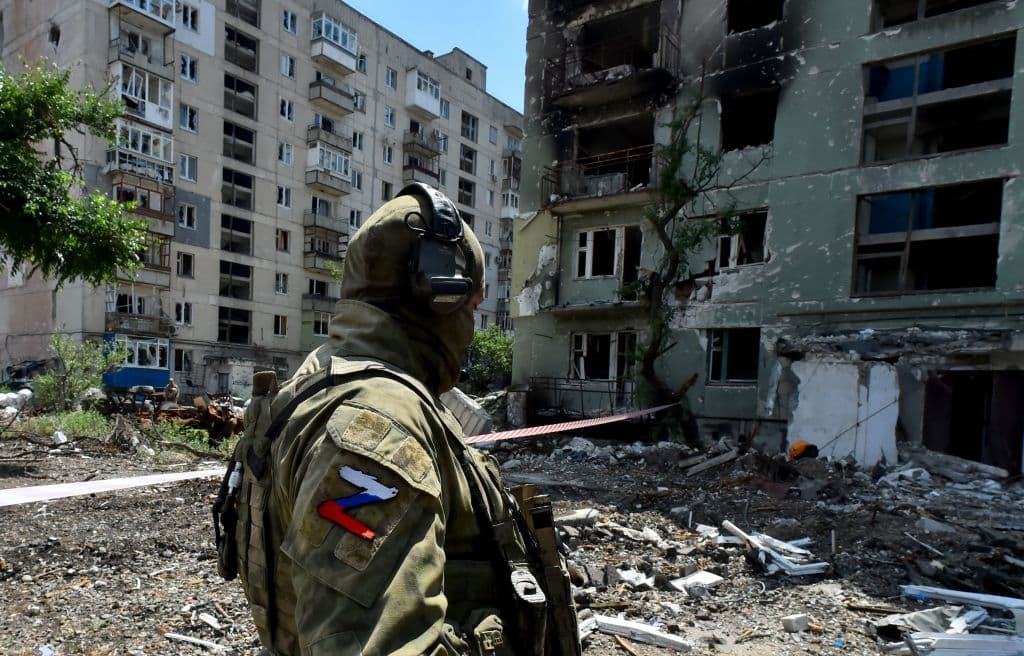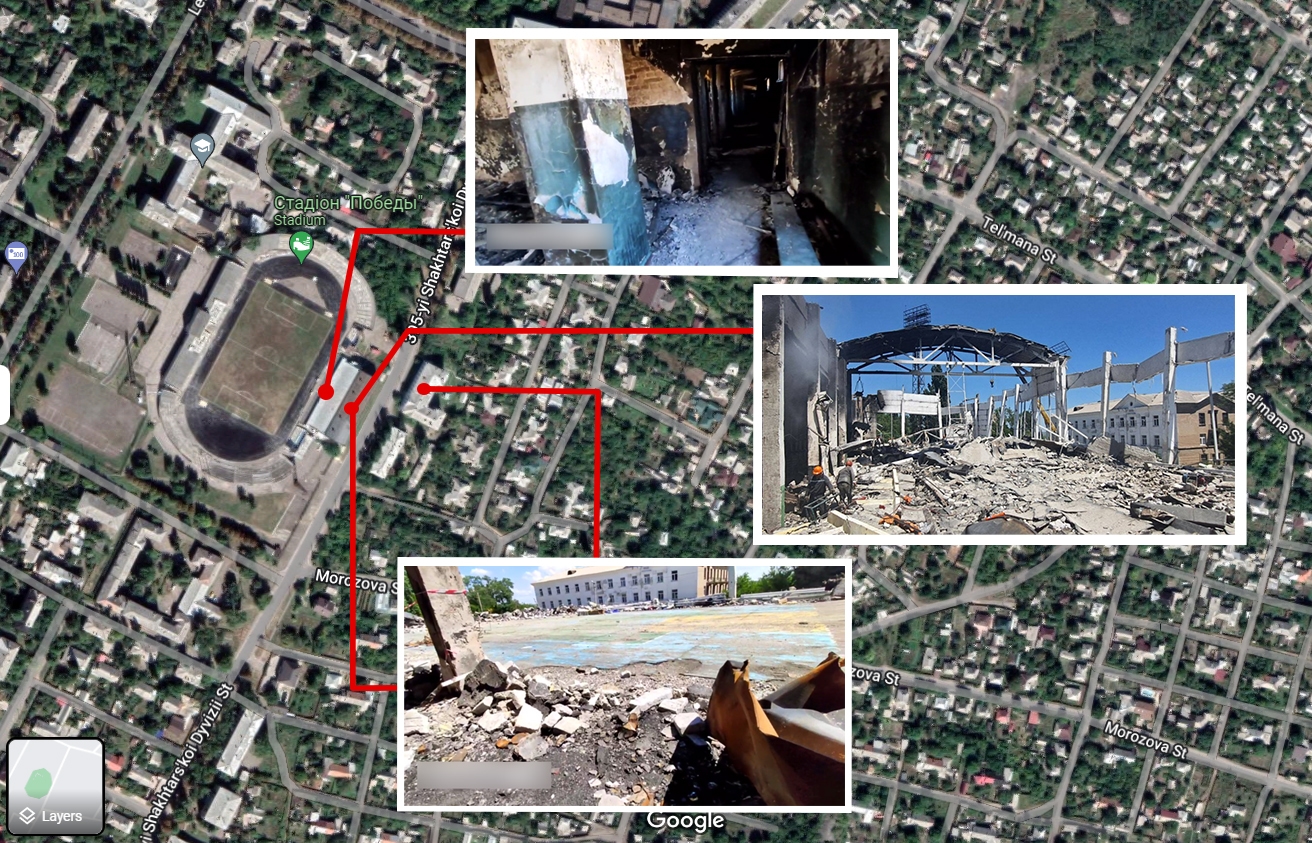EXCLUSIVE: Inside Ukraine’s covert operation to take out elite Wagner Group mercenaries in Donbas

Editor’s Note: The names of the people interviewed by the Kyiv Independent have been changed in this story to protect their identity as they have shared sensitive information that could place them and their families in danger.
Not all of Ukraine’s attacks on Russian positions end up circulating on social media like the recent strikes on what Ukraine says are over 30 Russian ammunition depots in the occupied east and south.
There are other, much more discrete operations that Ukraine carries out deep into Russian-occupied territories.
Among these low-profile operations was the destruction of a Wagner Group base 45 kilometers east of the front line in Russian-occupied Kadiivka in Luhansk Oblast in early June.
Read Also: Ukraine targets Russia’s ammunition depots, undermining its artillery advantage
Russia deployed the Wagner Group, a Russian-controlled mercenary group operating at the Kremlin’s request around the world, to eastern Ukraine amid its military’s “heavy losses,” the U.K. Defense Ministry reported on March 28.
“I was one of the first to find out that they had arrived and were stationed at the local stadium,” Oleh, a resident of Kadiivka, told the Kyiv Independent. (Editor’s note: The name has been changed to protect his identity.)
Living in a Russian-occupied city for the past eight years, Oleh has been cooperating with Ukrainian authorities, constantly providing them with intelligence.
“I passed this information to the right people,” Oleh said.
As a result, the Ukrainian military hit the base with artillery on June 9, killing anywhere between 50-200 mercenaries according to different estimates and destroying their weapons depot.
The Kyiv Independent has recreated the events of the operation based on conversations with local civilians and sources in intelligence agencies.
Identifying Wagner
Some Ukrainians who remained in Russian-occupied territories have been helping to identify Russian troops, equipment, bases, and depots, Anton, a member of Ukraine’s Special Operations Forces, told the Kyiv Independent. (Editor’s note: The name has been changed to protect his identity.)
The Special Operations Forces is a branch of Ukraine’s Armed Forces that conducts reconnaissance missions and covert operations behind enemy lines.
It was through locals that intelligence officers learned in May about the Wagner Group mercenaries stationed in Kadiivka.
“Without them, it would have been impossible,” Anton says.
“The group settled in a local gym. It became clear it wasn’t the Russian Armed Forces, but, let's say, a specific branch of the Russian army,” he said.
The Wagner Group, widely known as a private military company, is controlled by the Kremlin through Russian oligarch Yevgeny Prigozhin, a close friend of Russian President Vladimir Putin often dubbed “Putin’s chef,” because another company of his provides food catering to the Kremlin.
Read Also: Putin lacks troops in Ukraine but fears mobilization in Russia
The group consists mostly of former Russian servicemen and has previously been involved in wars and armed conflicts in Ukraine, Syria, the Central African Republic, Mali, Madagascar, Mozambique, and Sudan.
Prigozhin has also been in control of Russian “troll factories” operating on social media. In 2018, Prigozhin was charged with “funding and organizing operations for the purpose of interfering with U.S. political and electoral processes, including the 2016 presidential election, and other crimes including identity theft,” according to a U.S. court document.
Anton was the first to receive a message from Oleh. “There is some interesting information. Details later,” the local told him.
Oleh declined to say how he was able to pass the information about Wagner Group's location to Ukraine’s Special Forces so as not to endanger future operations.
“Transmission always happens in different ways. One informant may hand over information immediately, another, two weeks later. It's often a matter of chance,” Anton says.
Preparing the operation
After the information is passed along, there are several stages of verification, which generally include open-source intelligence methods.
Anton’s job is to get tips from locals, verify them, and pass them on to another unit, which then repeats verification.
Anton doesn't make decisions on specific targets. He says there are no reports or “unnecessary paperwork,” and a limited number of people are in the loop to prevent the information from leaking. He didn’t reveal how the information is verified.
Following verification, there is a risk assessment for civilians, after which a final decision is made on the target.
“One of the problems is when a new group of Russians settles on the lower floor of an apartment building. Civilians are living on the upper floors. Russians frequently do it, using civilians as a human shield,” says Anton. “They can settle between a kindergarten and a school, or inside one of them.”
This time, the Wagner mercenaries in Kadiivka had settled at a stadium in a residential area.
Read Also: As Ukraine withdraws from Sievierodonetsk, Battle of Donbas enters next phase
Oleh says a target is never destroyed the day after information is passed along. For the strike on the Wagner base in Kadiivka, preparations took about two weeks – from receiving the tip in May to striking the group on June 9.
During this time, local residents continuously checked to make sure the mercenaries continued to occupy the building. Those residents have since left the city.
According to Oleh, many locals knew that the Wagner Group was stationed in the city.
“Wagner mercenaries don’t know how to keep their mouths shut,” he says. “They themselves went around and introduced themselves as ‘an orchestra’ or ‘musicians’”
These self-given monikers are references to German composer Richard Wagner whom the group is believed to be named after.
“They were telling local girls, ‘we are an orchestra on a tour here,’” says Oleh.
Oleh found out exactly where the mercenaries were living at the stadium: in a large gym at the stadium’s premises. Under the stadium’s tribunes, the mercenaries set up an ammunition depot, with four or five of them standing guard there, and rotating frequently.
Videos from the site, published by Russian propagandists after Ukraine hit it, confirm Oleh’s description of the place.

“In total, there were about 300 to 400 (mercenaries). It's hard to say the exact number. I don’t think they even know how many of them were in town,” Anton says.
It’s unknown what this group was doing or preparing to do in the Donbas. Wagner mercenaries are an elite force, more professional and experienced than regular Russian troops or their local collaborators.
Successful strike
Ukraine hit the stadium with artillery on early in the morning on June 9. The site was destroyed.
The Special Operation Forces’ serviceman and his informant disagree on what weapons Ukraine used to hit the stadium.
Anton says the strike was carried out with a High Mobility Artillery Rocket System, or HIMARS, recently provided to Ukraine by the U.S. But Ukraine only officially deployed HIMARS in Donbas in the second half of June.
Oleh thinks it was a more obsolete weapon. Russian-controlled proxies reported shelling conducted by a Grad self-propelled multiple rocket launcher. However, photos of the site don’t show multiple impact areas that would have been left by this type of rocket launcher.
“The place was immediately cordoned off after the attack,” says Oleh. The local militia was not allowed to enter. Russian officers took over the site.
“Because of this, it was difficult to verify information on casualties. After a laptop was found at the site by a local, it was immediately torn out of his hands by the Russians,” says Oleh.
It took a week to clean up the debris.
Anton puts the number of killed mercenaries at around 250.
“Even for Russia, such high losses of motivated, highly trained fighters is a lot,” says Anton.
Read Also: Does Belarus' military have the capacity to attack Ukraine?
Oleh's information from the field is more modest.
“From one hospital, from another, the morgues, there was different data,” Oleh says. “Rescuers at the scene said there were 50 killed. Some of my sources said the dead were taken to a morgue in Luhansk. There they said that there were 150 bodies,” he added.
The number of survivors is unknown. A few hours before the Ukrainian strike, a part of the group left the site, according to Oleh. Around half of the group, including the ammunition depot guards, remained at the spot.
Russian-controlled proxies reported that 22 civilians were killed in the attack. They reported it as a strike on a residential area, and didn’t mention the presence of any military at all, let alone the Wagner Group.
Ukraine said only two civilians were killed as a result of the strike. Oleh agrees with Ukraine’s estimation.
“The (Russian-controlled proxies’) number was inflated, there weren’t 22 civilians. For some reason, they recorded 20 Wagner mercenaries as civilians,” says Oleh.
According to Oleh, the Wagner mercenaries on the site were mostly killed by concrete parts of the building crushing them.
Aftermath
Since the military occupation of Kadiivka began in 2014, Oleh has helped Ukraine in any way possible. He tracked Russian troop movement, handing over sensitive information to Ukrainian special services.
“In 2014, the Ukrainian military was not shooting at bases and warehouses like they do now. Although the data was still transmitted,” he says.
“A couple of months ago, Ukraine hit a base near my town for the first time. I bought a bottle of beer to celebrate. I've been waiting for this for eight years,” Oleh recounted.
Recently, Oleh has had more and more reasons to celebrate. In his town alone, Ukrainian troops have hit six ammunition depots so far, according to Oleh.
The last attack occurred on July 14, when according to Russian-controlled proxies, Ukraine hit Kadiivka with HIMARS. An ammunition depot caught fire as a result.
Oleh says the new long-range artillery provided by the West is significantly reducing the opportunity for Russian troops to conduct attacks and shelling of Ukrainian territory.
Meanwhile, Oleh and others continue their resistance by helping Ukraine far behind the front lines.
____________________
Note from the author:
Hello! Alexander Khrebet here.
This is my debut story as a reporter for the Kyiv Independent. I hope you enjoyed it. For this article, I spoke to people whose lives have been completely upended by Russia's war. Some of them have been living under Russian occupation for years, but have continued their silent resistance. These stories have to be told and read. To continue publishing stories like this we need your support. By donating to the Kyiv Independent, and becoming our patron you can help us to keep telling the stories that matter. Thank you!










